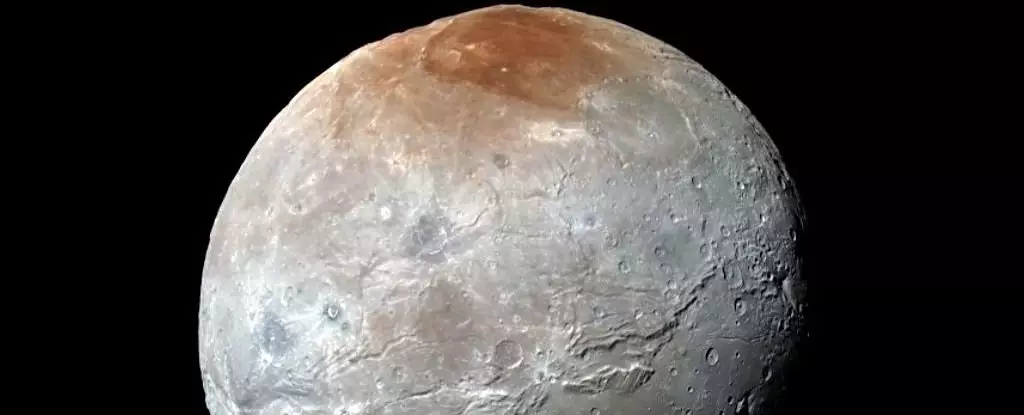Nestled in the frigid outskirts of our Solar System, approximately 5.7 billion kilometers from the Sun, lies Pluto, a dwarf planet that conjures curiosity and wonder among astronomers and space enthusiasts alike. Though its size is diminutive—smaller than Australia—Pluto is a complex world adorned with icy mountains, vast glaciers, and ancient craters, all of which are shaped by extreme temperature conditions averaging -232°C. In the gravitational dance around Pluto, five moons—Styx, Nix, Kerberos, Hydra, and Charon—add to the mystery; of these, Charon stands out as the largest.
What sets Charon apart is its unique relationship with Pluto. Together, they form a binary system, orbiting a shared center of mass. This relationship challenges our traditional notions of planetary bodies and has influenced Pluto’s reclassification from planet to dwarf planet. Understanding the intricate dynamics between Pluto and Charon not only sheds light on their formation but also contributes to our broader understanding of distant celestial bodies.
Recent Discoveries: A Major Leap in Understanding
Recent research led by astronomer Silvia Protopapa at the Southwest Research Institute has surfaced groundbreaking findings concerning Charon’s surface composition. Utilizing data collected from NASA’s James Webb Space Telescope, scientists have detected the presence of carbon dioxide and hydrogen peroxide on Charon’s icy crust. These compounds are expected to unravel the history of not only Charon but also provide clues regarding the evolutionary processes at play in trans-Neptunian objects—bodies beyond Neptune’s orbit.
The significance of detecting carbon dioxide cannot be overstated; this molecule acts as a historical marker, unveiling the geological and environmental past of Charon. Initial analyses suggest that these carbon compounds may originate from beneath Charon’s surface, potentially exposed by the impacts of asteroids or comets, which have carved craters and divulged the fresh material hiding below the frost.
The dance between Pluto and Charon is unlike any seen in our Solar System. While Charon orbits Pluto, they also both revolve around a mutual barycenter, making them appear as a double dwarf planet system. This phenomenon deviates significantly from the Earth-Moon relationship and raises questions about the criteria that define planetary status. Pluto’s inability to clear its orbit has made it a subject of intense debate, leading to its demotion from planet status—a decision that still sparks discussions within the astronomical community.
The implications of such unique orbital dynamics stretch beyond definitions, influencing our understanding of planetary formation and stability as well. As we appraise Charon’s diverse chemical composition, including traces of ammonia, nitrogen, and various carbon-based compounds, it urges scientists to revisit existing models of dwarf planet formation.
Insights from the James Webb Space Telescope
Instrumental in the recent discoveries is the James Webb Space Telescope (JWST), a revolutionary piece of technology launched in 2021. With its impressively large 6.5-meter mirror, the JWST possesses the capability to capture infrared light that is otherwise invisible to the naked eye or traditional ground-based telescopes. This ability has proven invaluable in identifying specific elemental signatures from celestial bodies.
The process of spectroscopy employed by the JWST allows researchers to deconstruct light into its constituent colors, revealing a unique “fingerprint” for each molecule present. Consequently, the recent findings of carbon dioxide and hydrogen peroxide on Charon unveil a realm of possibilities regarding its surface alterations and materials, enhancing our understanding of possible cryovolcanic activities—an indication that Charon may still be geologically active.
Understanding Charon’s complex composition and its dynamic interaction with Pluto is imperative for comprehending the larger context of the Kuiper Belt, where these celestial enigmas reside. The newly identified surface compounds underscore the intricate geological history Charon may have endured, thereby refining our theories regarding its formation. Whether formed through an impact event or through coalescence with other celestial objects, these new findings hold significant implications for the origin of many trans-Neptunian objects.
The ongoing exploration of Charon inspired by the JWST’s revolutionary capabilities offers us an exciting glimpse into the unexplored territories of our Solar System. Unveiling the secrets of distant worlds not only helps elucidate the particular circumstances surrounding Pluto and Charon, but it also enriches our understanding of planetary systems’ formation and evolution beyond our immediate cosmic neighborhood. As research progresses, we stand on the brink of further revelations, revealing the fascinating tapestry of our universe.

